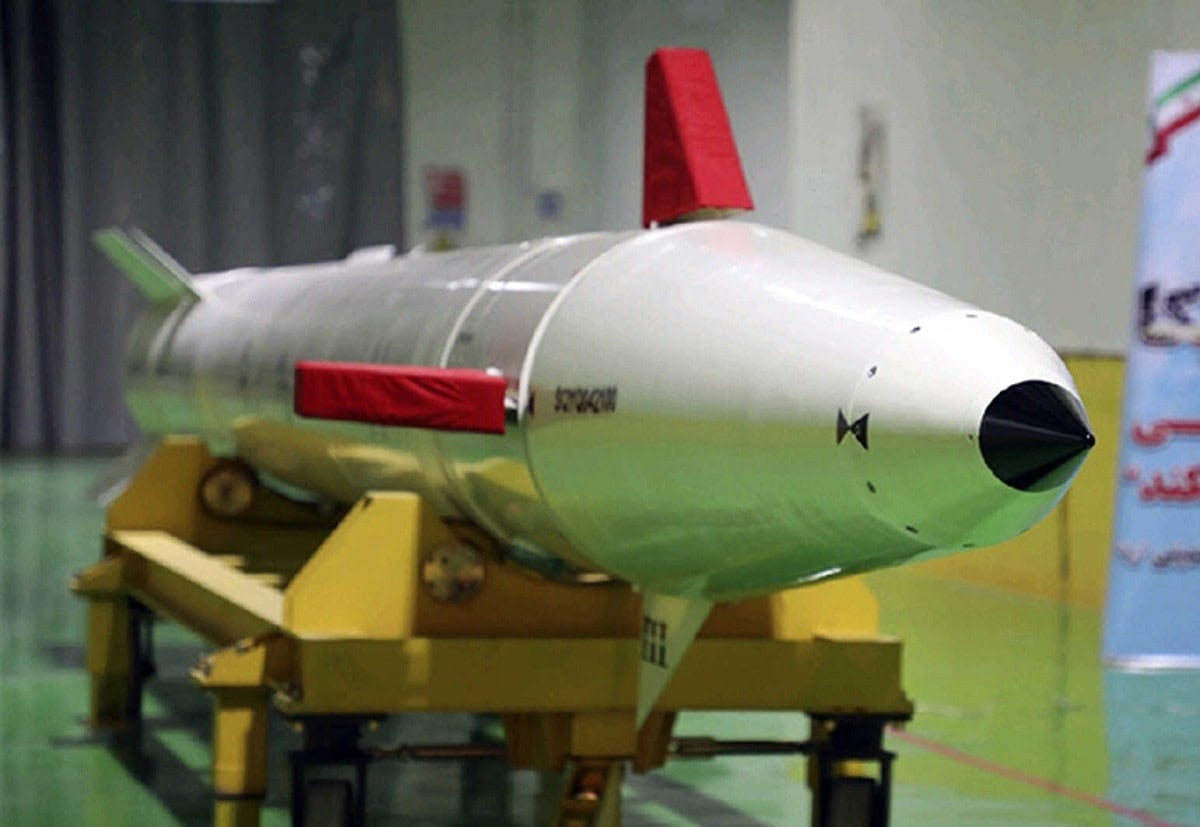Iran’s missile program has received considerably less attention than its nuclear program; however, it could directly threaten the U.S. homeland.
The Iranians have disguised their quest for an Intercontinental Ballistic Missile (ICBM) under the guise of its drive for space technology, not unlike the Soviets with Sputnik in 1957.
“The IRGC space program, which is separate from the state-run space program, adds complexity to this picture. The IRGC space program initially did serve, more or less, as a cover for developing long-range missile technologies, but it appears to have a larger purpose recently,” the U.S. Institute for Peace said last June. “Regardless of Tehran’s intent, international concerns will probably grow as Iran develops more capable rockets for satellite launching for fear that they these could be re-purposed as long-range ballistic missiles.”
The Intelligence Watching Iran’s Weapons Programs
The U.S. Intelligence Community’s 2023 threat assessment noted that Iran’s space program “shortens the timeline” to an ICBM for Iran because they use “similar technologies.” The Israelis have reached similar conclusions about the goals of Iran’s ballistic missile program, Ha’aretz reported in December.
Some believe Iran’s recent reconciliation with Saudi Arabia could lead to it increasing its focus on the development of new technologies such as solid-propelled missiles that could be used in its ICBM program.
North Korea is widely believed to have obtained technology to miniaturize its nuclear weapons and place them atop its missiles. Considering the history of technology sharing between Iran and North Korea, sharing that technology with Iran is not beyond the realm of possibility. A U.S. government source told Reuters in September 2020 that Iran and North Korea were collaborating on ICBM technologies.
CIA Director William Burns stated in February that the U.S. believes Russia could be helping Iran to advance its missile technology in exchange for economic aid.
“What we also see are signs that … Russia is proposing to help the Iranians on their missile program and also at least considering the possibility of providing fighter aircraft to Iran as well,” Burns said.
U.N. Security Council Resolution 2231 was passed following the Iranian nuclear agreement known as the Joint Comprehensive Plan of Action (JCPOA), which called on Iran to refrain from developing missiles that could be used to deliver a nuclear weapon.
Iran Pushes Forward
Iran placed its first satellite into orbit in April 2020 atop a Ghaem-100 rocket. Both the Iranian Revolutionary Guard Corps (IRGC) and Iran’s Aerospace Industries Organization operate this launch vehicle. This rocket includes technology likely derived from North Korea’s Hwasong missile series.
It successfully tested the Ghaem-100 again in November.
A letter to the U.N. Security Council sent by the British, German, and French governments estimated that the missile could be converted to carry a 1,100 lb. warhead, but disputed Iranian claims that it had intercontinental range.
Iran tested a rocket known as the Zoljanah, a two-stage launch vehicle that has both a liquid-propelled and a solid-propelled stage last June.
Statements by Iranian officials appear to validate Western concerns about Iran’s intent.
IRGC Aerospace Forces Deputy Commander Seyyed Majid Mousavi claimed on Iranian TV in November 2020 that Iran had ICBM technology.
Supreme Leader Ayatollah Ali Khamenei’s personal representative Nassir Hosseini announced during a Nov. 11, 2022 sermon that the Ghaem-100 missile “is an intercontinental missile and a satellite carrier that uses solid fuel.”
“This is a message for the enemies of this land. The range of this missile is about [7,000 miles]; whereas, America is about [6,800 miles],” Hosseini said, according to translation by MEMRI. “Our enemies have realized that if they make the slightest mistake our response will be harsh and destructive.”
Hosseini claimed the missile could strike any target on land or in space and evade missile defenses.
Mehdi Baktiari, editor of the IRGC-linked Tasnim News Agency, claimed on Iranian TV last November that Iran could deploy an ICBM whenever it decides to.
“However, at any moment, when they so desire, they can build an intercontinental missile with a range of, more or less, [7,000 miles], with a warhead weighing several hundred [pounds],” Baktiari said. “We now have the Ghaem-100 satellite launcher. Inshallah, within several years, we will have the Ghaem-120 launcher. This is the launcher envisioned by the martyr Tehrani-Moghaddam, and inshallah, it will get us to an orbit 36,000 kilometers above ground.”
MORE: The F-35 Now Comes in Beast Mode
MORE: Why the U.S. Navy Tried to Sink Their Own Aircraft Carrier
John Rossomando was a senior analyst for Defense Policy and served as Senior Analyst for Counterterrorism at The Investigative Project on Terrorism for eight years. His work has been featured in numerous publications such as The American Thinker, Daily Wire, Red Alert Politics, CNSNews.com, The Daily Caller, Human Events, Newsmax, The American Spectator, TownHall.com, and Crisis Magazine. He also served as senior managing editor of The Bulletin, a 100,000-circulation daily newspaper in Philadelphia, and received the Pennsylvania Associated Press Managing Editors first-place award in 2008 for his reporting.

